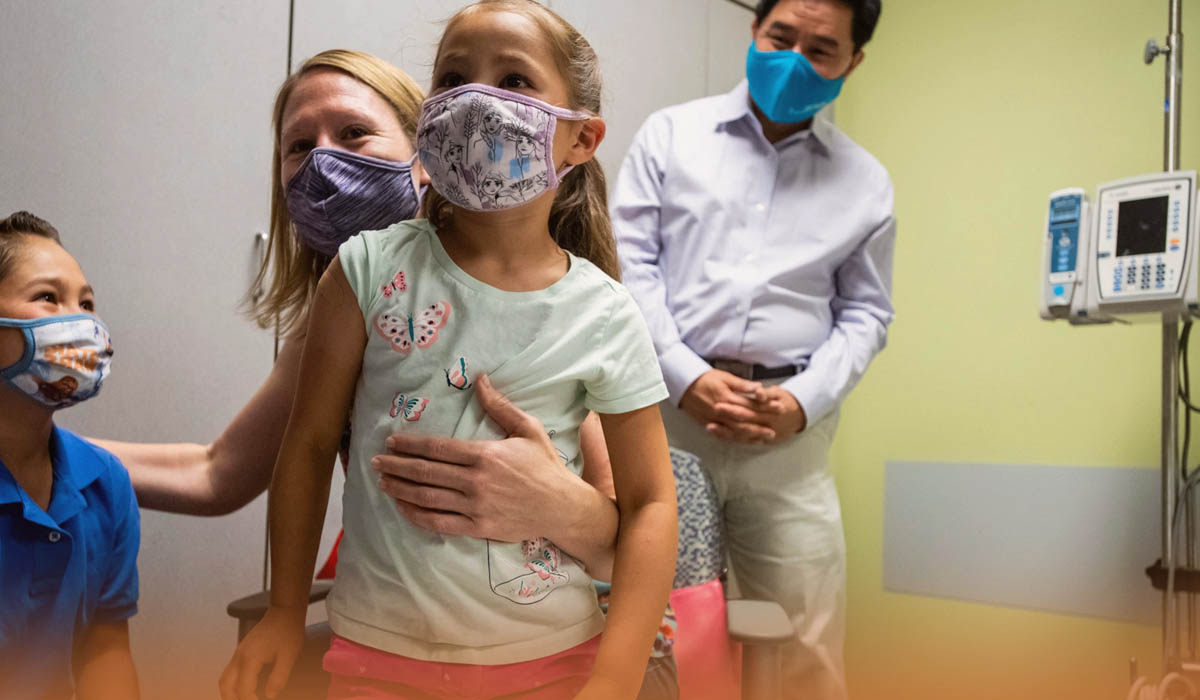A lower dose of Pfizer/BioNTech-made coronavirus vaccine cleared its first regulatory obstacle on 26th October for use in younger children, after the US Food and Drug Administration advisory panel voted to approve it for emergency-use authorization (EUA) of vaccine for 5–11-year-olds. Child Specialists could soon find themselves on the front lines of the United States government determinations to get around 28M school-aged children in line for their COVID-19 vaccine shots.
The 17-Zero vote, with one abstention, would now go to the agency, which is anticipated to make a conclusive ruling in the upcoming days. If approved, the move would make about the whole US population eligible for coronavirus jab. Only children aged four and below would remain ineligible.
In spite of the vote in favor, selecting whether the benefits of immunization for kids outweigh possible perils appeared to weigh heavily on the medical advisers.
If authorized and recommended by @CDCgov, this will be the first COVID-19 vaccine available for use in children 5 to < 12. Today’s vote supports our ongoing mission to expand the population of people eligible protected against #COVID19.
Learn more: https://t.co/R8QPujSN2v pic.twitter.com/KqSVOOy4pn
— Pfizer Inc. (@pfizer) October 26, 2021
The advisory panel member Dr. Eric J. Rubin, MD, editor-in-chief of the NEJM (New England Journal of Medicine), said this is a much more challenging one; he realizes they’d anticipated coming into it. Moreover, the data show that the jab works and it is quite safe. However, referring to the heart condition myocarditis, an inflammation of the heart muscle, Rubin said they’re anxious about an adverse effect that they couldn’t measure yet.
Different Labels, Caps For COVID-19 Vaccine Vials for Adults and Children
Moreover, at issue was whether the inoculations were needed at all, given the usually lower risk of fatal COVID to children.
President and Chief Executive of Meharry Medical College in Tennessee, Dr. James E. K. Hildreth, said that it just appears to him that in various ways, they’re immunizing children to protect elders, and it should be conversely. So, he does believe that children at the highest risk do need to be inoculated. But immunizing all of the children seems a little much for him. And to a chief medical officer at US CDC and the advisory panel member Dr. Amanda Cohn, the inoculation benefits were much transparent.
Miss Amanda Cohn said when she looks at this query, it’s quite evident to her that vaccination benefits do outweigh the peril, when she hears about children who are being put in the Intensive Care Unit (ICU), who are having long-term consequences after their COVID-19, and children are dying. Moreover, they inoculate regularly against jab-preventable diseases for which far fewer fatalities and hospital and ICU admissions occur.

Source: Web
An American pediatrician and a panel member Dr. Paul Allan Offit, acknowledged the complexity of the decision.
The COVID vaccine for children aged five-to-eleven is a lower dose than the one given to twelve-year-olds, 10 mcg of messenger-RNA versus 30 mcg. Like in elders, the complete inoculation series consists of two shots given 21-days apart. The children’s shots would “come in vials with an orange cap and an orange label.” The shots for adults and teenagers “come in vials with a purple label and purple cap.”





